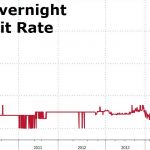The IMF staff has now determined the Renminbi should be included in the IMF’s unit of account, the Special Drawing Right (SDR). Reviews of the decision are covered here and here. But as the articles note, there is a long ways to go before the RMB is internationalized.
This was actually the point I made in the discussion of a paper on the RMB’s progress toward internationalization by Eswar Prasad, at a San Francisco Fed conference a week and a half ago (conference agenda not yet online). The paper is not yet online (an older paper from last year is here).
The reason the road will be long is fairly simple — at least in my mind. It’s not because of technical difficulties — Chinese policy authorities have demonstrated that if the political will is there, they can implement policies forcefully and effectively. Rather it is a question of choices, and in this case the trilemma is once again relevant:

Figure 1: The Trilemma.
In order for China’s currency to become a key international — as opposed to a regional — currency, it will have to liberalize the capital account (and the domestic financial system as well). That process in itself requires a conscious decision to relinquish control. That process is already underway, as shown in this figure from Chen and Qian (2015) (earlier version discussed in this guest post).

Figure 6 from Chen and Qian (2015).
However, as China moves from the top vertex of the triangle toward the base, policymakers will have to make a choice of (1) whether to continue liberalizing, and then (2) whether to move toward a combination of free float/financial openness or a combination of monetary autonomy/financial openness.
In the best of times, these would be difficult decisions. Against a backdrop of a decelerating economic growth, tentative financial conditions, and a weak global economy, it’s not clear that Chinese authorities would view the ascension of the RMB as a sufficiently high priority, so as to sacrifice policy autonomy.














Leave A Comment